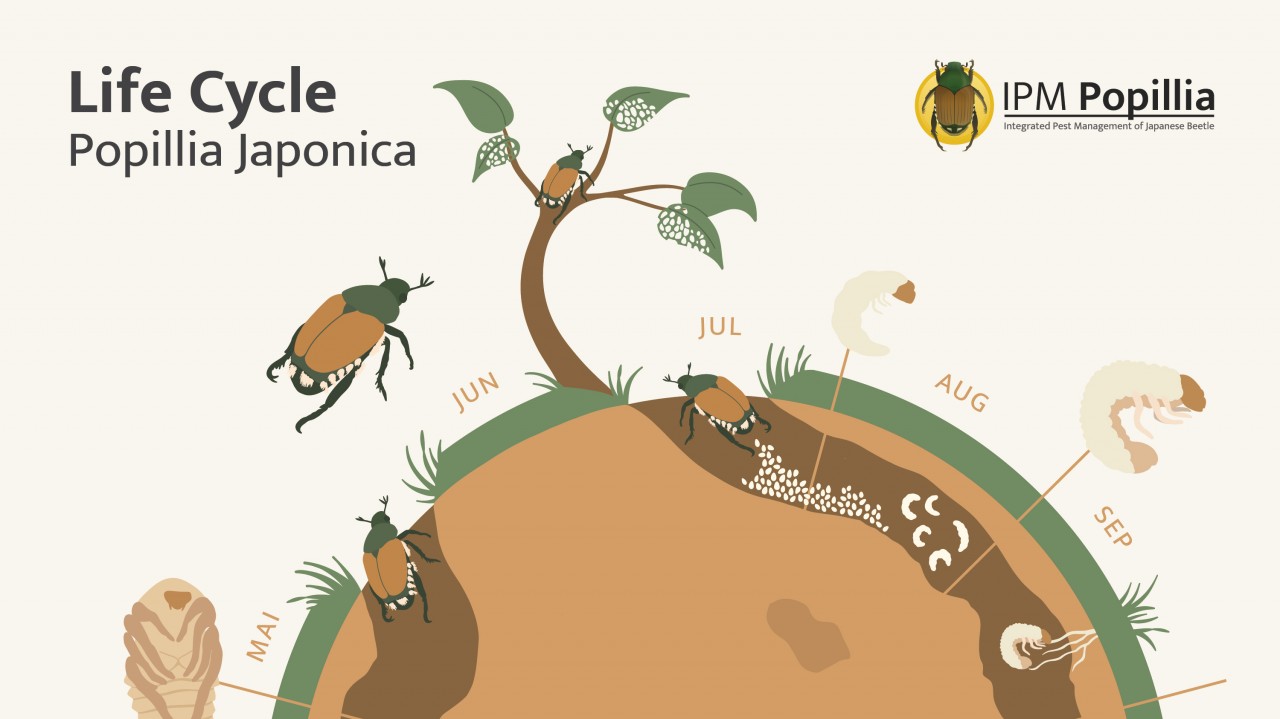Visualizing insights in our science communication: infographics for Citizen Scientists
For some time now, we have opened up our Popillia Japonica research to Citizen Science. With the support of volunteer Citizen Scientists, we are trying to gather more information about the distribution of the Japanese beetle through the IPM Popillia's Citizen Science App. Invasive species such as the Japanese Beetle pose a severe threat to biodiversity and impacting over 400 different plant species. The observations provided by Citizen Scientists are analyzed and incorporated into our ongoing research. In gratitude for their scientific assistance, we strive to communicate our findings back to the community.
Life Cycle of Popillia Japonica
To kick off this effort, we've collaborated with SPOTTERON to create an informative infographic detailing the life cycle of P. Japonica. This resource is designed to inform future Citizen Scientists across various platforms about when and where they can expect to encounter the Japanese beetle - whether as a larva in the soil or as an adult beetle on plants. To stay updated, please visit our blog, where we try to share our latest findings regularly with you!
Also, of course, we hope you like the infographic! Check it out below!
Download the infographic: Life Cycle of Popillia japonica
Would you be interested in using the infographic for educational and science communication purposes? Below, you will find two different PDF variations of the infographic to download. Please take note of the citation requirements: as a release under the license of Creative Commons BY: Infographic "Popilla japonica Life Cycle" by SPOTTERON Citizen Science Platform - www.spotteron.net for IPM Popillia Horizon 2020 project | www.popillia.eu (website linked if possible).
For inquiries about special variations of the infographic, please feel free to contact us at This email address is being protected from spambots. You need JavaScript enabled to view it..
Related Posts
By accepting you will be accessing a service provided by a third-party external to https://www.popillia.eu/







